Patent Data 1 includes a huge quality and quantity of information. Qualitatively, the information is a multi-facet collection of varied technical disclosures, legal content, and governmental records. It includes technical jargon, plain language, graphics, and reference citations.
The dark side of Patent Data persists after patent issuance, a fact shown by the data presented in Tables 4 and 5 providing post grant review proceeding statistics in U.S.7,8 This data shows that despite those beliefs mentioned above that patents are not subject to change or challenge, patents are under widespread challenge in the US by a wide range of challengers.
Quantitatively, for example, WIPO records contain approximately 65,100,000 patent documents as of August 31, 2017 (Table 1).2 EPO records contain approximately 99,627,817 patent entries up to August 31, 2017 (Table 2).Patent Data has been used by a niche groups of professionals and for specific, but also niche, purposes.4 Today, Patent Data should have a wider availability and usage. However, there is no common, unified standard format for Patent Data, and each national patent office or software developer offers limited functionalities or user interfaces. Most users can only access Patent Data from each national patent office at a specification level5 and without much intelligent analytics. This is unacceptable considering the ranges of Big Data types and analytical methods available.
There are historical and widely accepted though absolutely incorrect beliefs that patents are not subject to change or challenge. In the US, this is exasperated by the presumption of patent validity. These beliefs prevent less experienced users from appreciating dark sides of Patent Data. Users are thus not motivated to create innovative methods to utilize Patent Data, or to explore value of Patent Data outside its traditional areas where it may assist decision makers.
As an effort to make Patent Data more versatile, the Authors will explain below the various challenges caused by the dark sides of Patent Data, and the Authors urge the national patent offices and software industry to overcome these challenges.
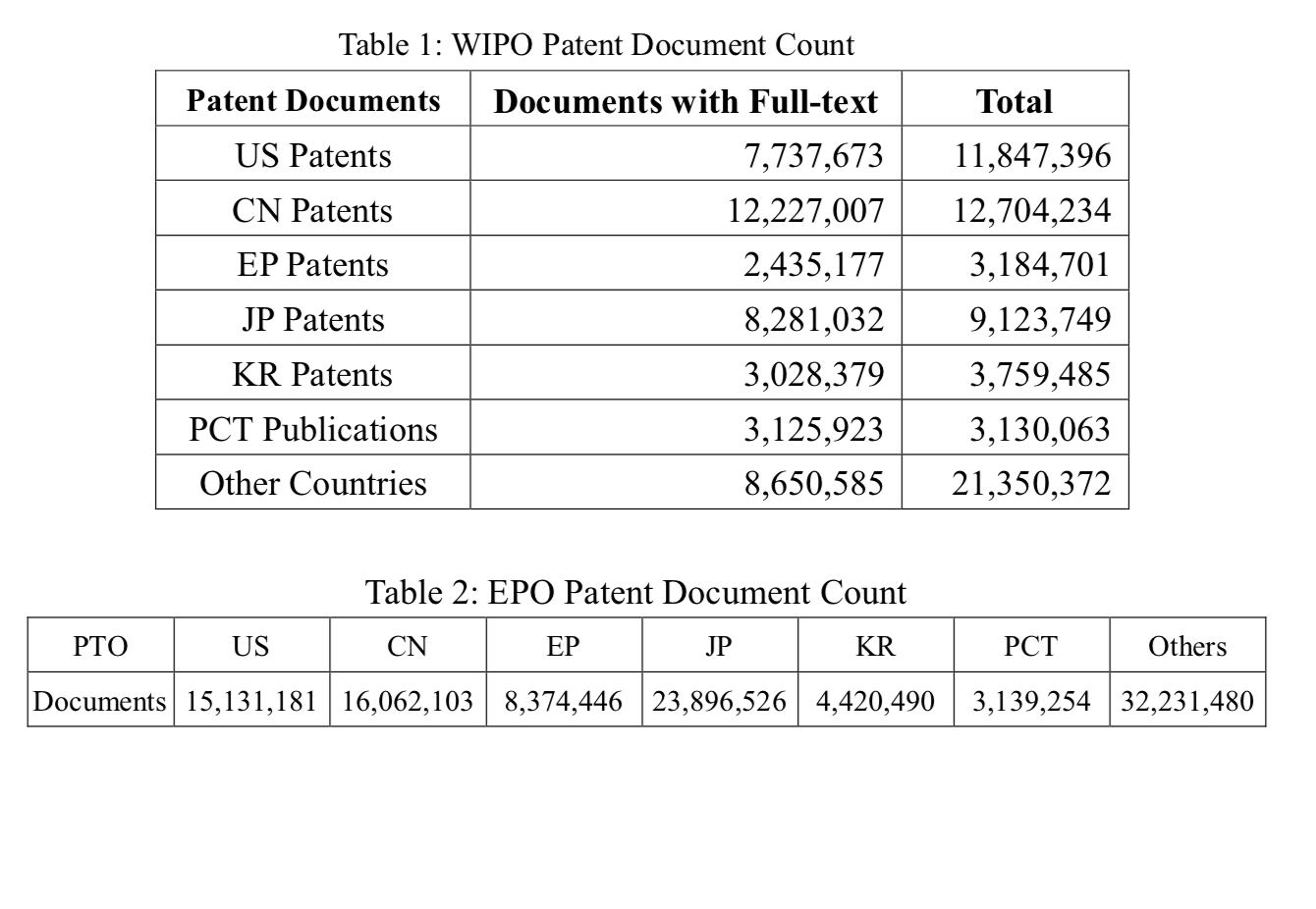
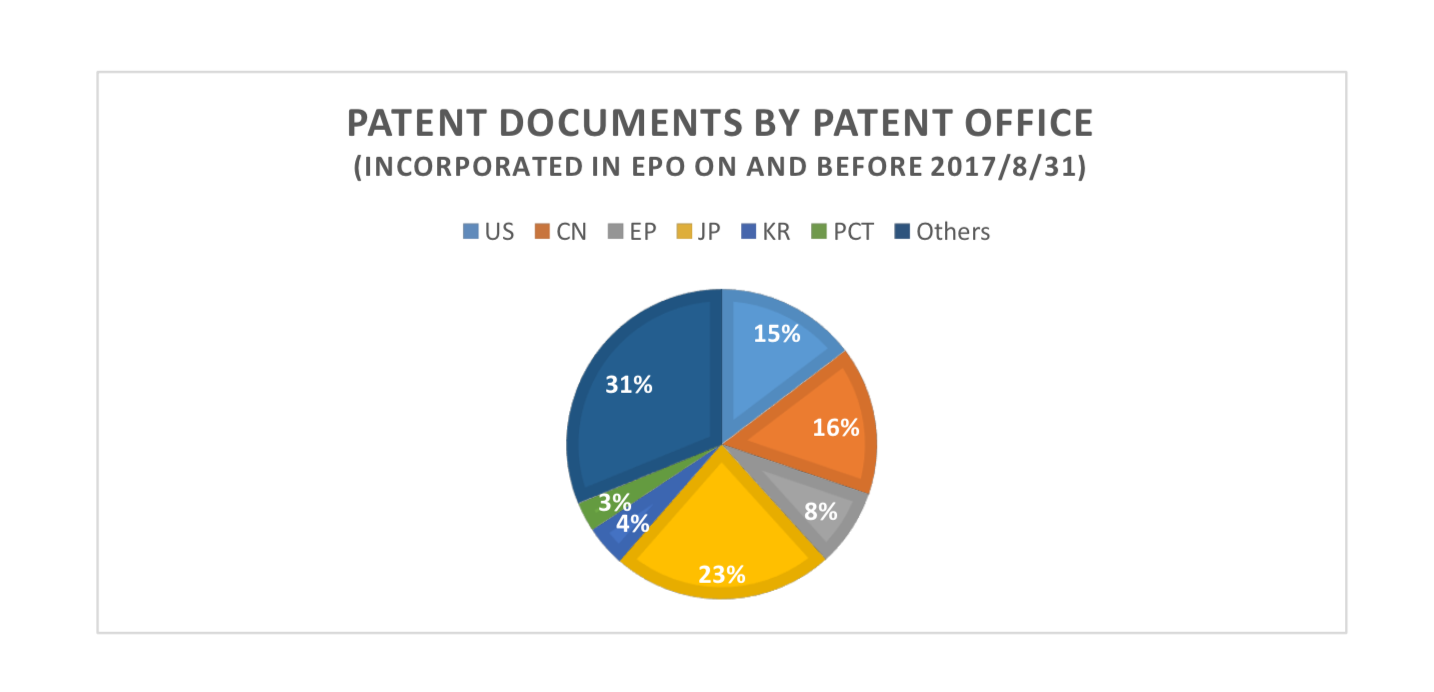
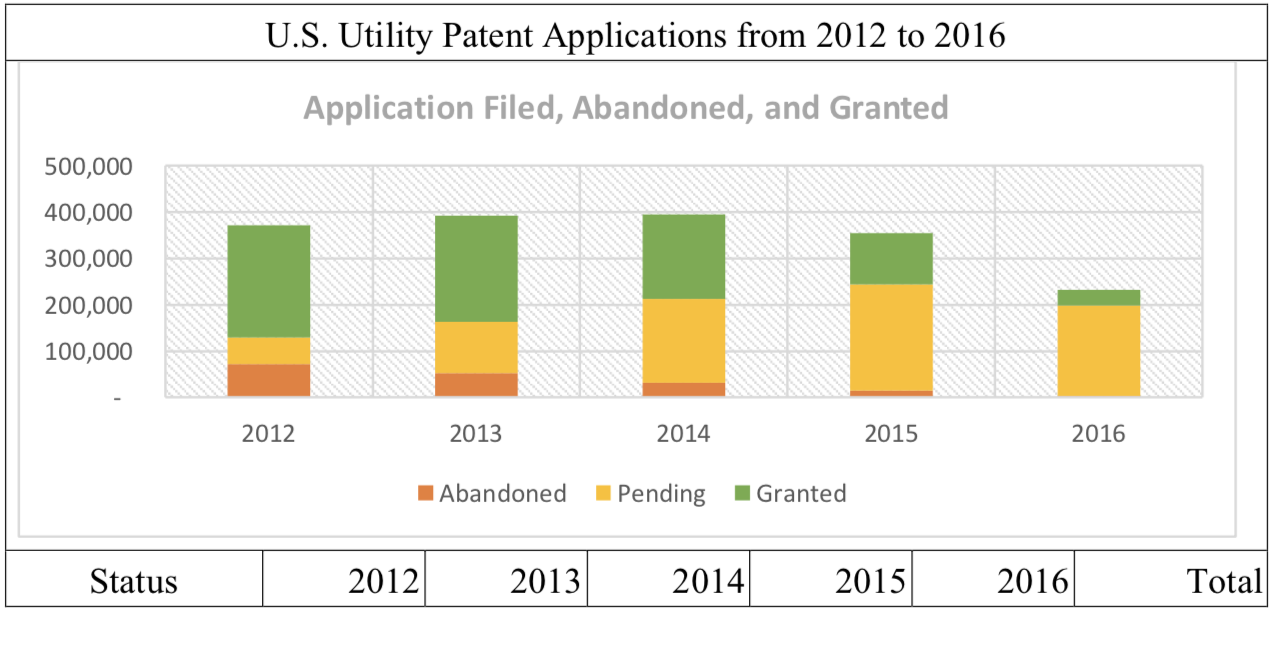
The Dark Side of Patent Data
The Authors see a dark side of Patent Data. This dark side refers to a wide range of issues that cast potential negative shadows on Patent Data. The lack of care, knowledge, skill, or experience of the patent professionals involved often leads to errors. The errors result in either valid applications getting rejected or issued patents getting invalidated or limited in claim scope. Either way, the value of patent assets to their owners is reduced. Table 3 below provides, for years 2012 through 2016, the total number of patent applications filed, abandoned, and granted in U.S. and China. This data suggests that a significant number of patent applications are rejected for not having a patentable subject matter or for lack of novelty and non-obviousness. The ratio of allowed to rejected cases in each of these countries is considered too low.

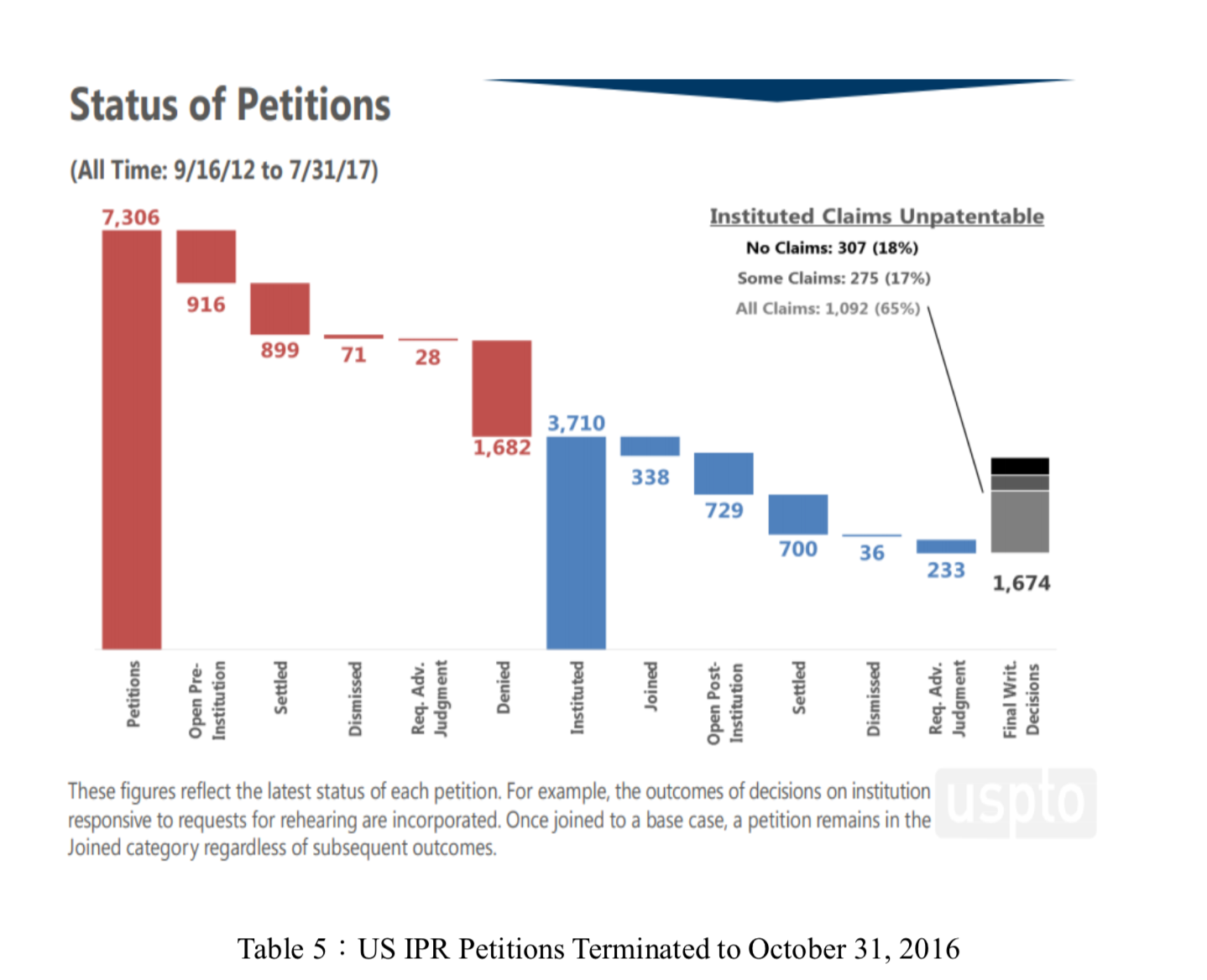
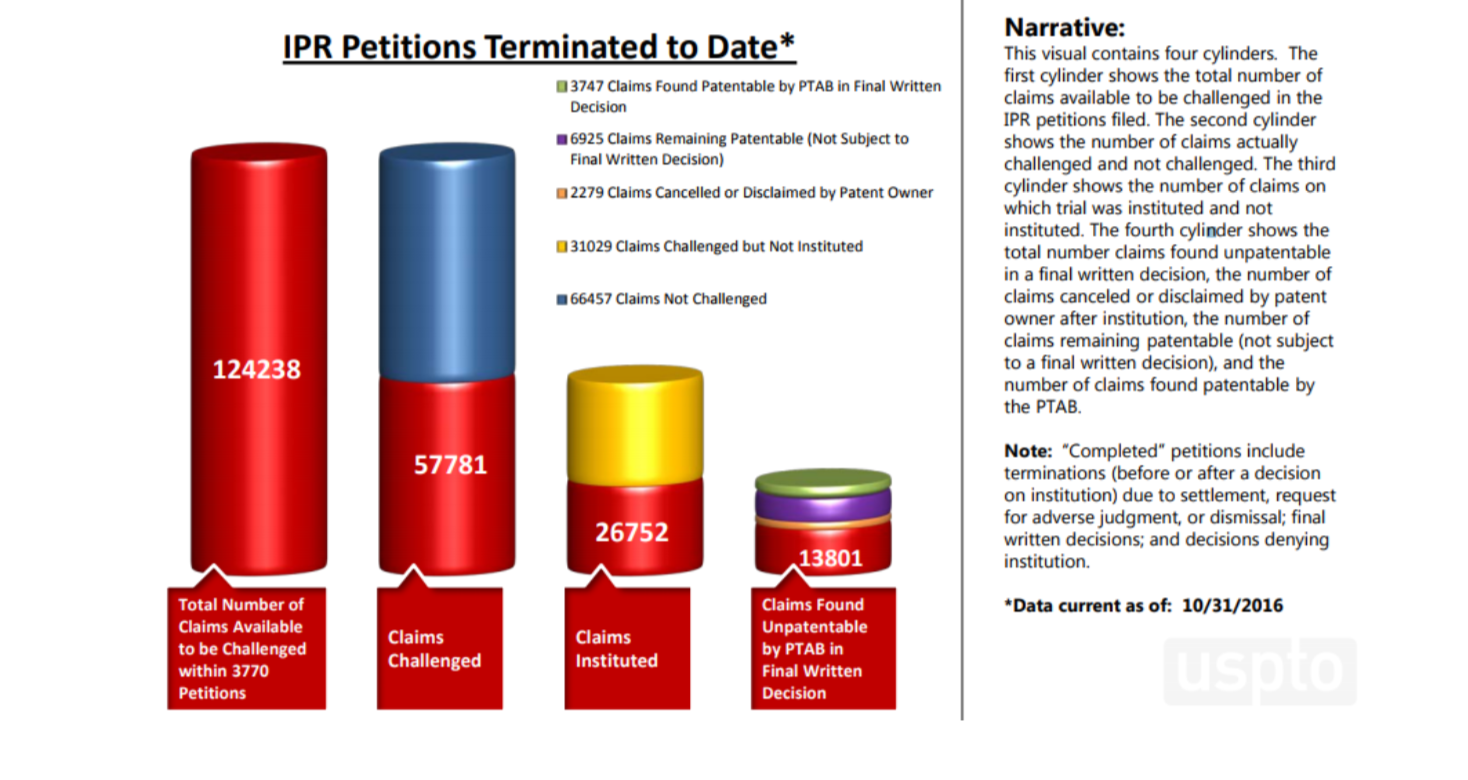
Patent procurement is a lengthy, complex, and specialized process. For example, the process includes invention disclosure, prior art search, draft and review of patent specifications, examination by patent offices and response thereto, and issuance.9 There are various stakeholders along each step and at each point. The dark side of Patent Data can be attributed to mistakes or lack of information by the various stakeholders. The dark side problem will become more aggravated as the number of Chinese patents soars, and further because public access to Patent Data will continue to be deficient in many countries including in U.S.10 The severity of the dark side problem calls for immediate solution to prevent harm to the public due to questionable patent assets11 affecting wide ranging business and governmental decisions. Solving the dark side problem especially benefits R&D programs because the programs would no longer be blocked by poor quality patents.
The Dark Side of Patent Data Deployment
Patent assets affect wide ranging business and governmental decisions. However, the dark side of Patent Data deployment manifests in decision makers’ lack of confidence on patent landscape reports from patent practitioners. For various reasons, many patent practitioners do not have the requisite breadth and height of business skills. This leads to difficulty in interpreting Patent Data which in turn leads to difficulty in determining patent values. Alternatively, many practitioners generate flawed patent reports due to misunderstanding or misinterpretation of Patent Data. Sophisticated decision makers from the government, academia, or industry sectors do not believe such reports can be relied upon to support their needs. These needs include setting governmental policies for the scientific community, strategies for specific industries, exploring new technology, planning for new products, advancing competitive positions in the market place, making merger and acquisition decisions, allocating R&D resources, deploying patents for monetization etc.
For example, in Japan, Taiwan, and China, these patent reports can be based upon any of the nearly 70 Patent Landscapes models used in those countries. These models are all based upon the PTO classification system and low quality patent data. They do not rely on an information matrix, or Dashboard, combing intelligence of the industry, the technology, and the products. Such information is what many users actually consult through different stages of research and development, and through different phases of patent asset life cycle assessments. Consequently, these existing Patent Landscape models cannot generate interpretable information that would be more useful to decision makers. The Patent Landscapes practiced in the U.S. and Europe does not transcend from mere collection of data from databases to actionable intelligence information.13 In short, globally, current patent landscaping methods are ill equipped to support the needs of decision makers such as CEOs or CTOs.
Creating Value for Patent Data
Patent Data, when properly made available and analyzed has broad applications. Patent Data can and should assist innovators, entrepreneurs, established businesses seeking reform or upgrade, and patent asset management firms alike. Patent Data also aids sensible decision making in industry, government and academia.14 The Authors describe below briefly the various contexts where Patent Data can provide support to decision makers.
1. Science and Technology Policies: Patent Data can depict a technology’s global context and trends. Patent Data can guide industry and academia to properly allocate R&D budgets that is used to (a) conduct basic and applied research, (b) build momentum for the next round of industrial transformation, and (c) focus development in much needed technical areas such as material science, biology, wireless communications, artificial intelligence, internet of things and so on.
2. Industrial policies: Patent Data can identify emerging technologies or organizations impacting or disrupting established industries or traditional investment and M&A networks or old supply chains. Such examples include LIDAR and ADAS’s impact on self-driving car industry, AI’s impact on the software and hardware industry, BIO’s impact in the pharmaceuticals and medical treatment field, Micro LED’s impact to the display and lighting industry, robot technology’s impact on manufacturing and agriculture businesses, and Blockchain’s impact on the financial technology sector.
3. Innovators and Startups: Patent Data has the potential to help entrepreneurs to choose R&D subjects with precision, to implement a R&D strategy effectively, and to connect entrepreneurs to various industry, M&A, and supply chain networks. Patent Data can also be helpful to reduce startup risk and failure. The examples include Security and Cryptography technology as applied to online payments, Big Data technology as applied across industries, Sensor technology as applied to fields such as medical device, robotics and internet of things, and Algorithms as applied to business modeling.
4. Mergers and Acquisitions: Patent Data is capable of depicting with specificity the global competition landscape in technology, products and patent assets. Patent Data will facilitate mergers and acquisitions in the industry and reshape the markets and competition profiles. For example, Foxconn Group invested in Lytro’s light field imaging platform technology. Foxconn Group also obtained through its Sharp acquisition access to 5G Standard Essential Patents and display technologies. Qualcomm’s NXP acquisition provides Qualcomm ownership in products, customers, and patents outside the communication field. Intel acquired Mobile to own products, customers and patents in the self-driving car sector.
5. Technology Trends: Patent Data can detail global context and trends for technologies, products, and patent assets in order to accurately predict future market needs in terms of product and technology features. This enables better planning and efficient resource management. Technology current trending include AI, 5G, IGZO, UAV, biopharmaceuticals, and digital medical devices.
6. Talent deployment: Patent Data contains a global picture of inventors and designers of technology products and patent filings. Patent Data enables talent recruiting across borders.
7. Patent Asset Management: Patent Data can be used to map the technical content and context of the global patent assets as a whole, the distribution and relatedness of these assets. Patent Data can be used as a tool to deploy quality patent assets from various countries to form high-value patent portfolios. Products with big market share and high gross margin can be developed with the backing of high-quality and high- value patent portfolios. Patent Data can also be utilized to run patent monetization programs to obtain royalty, sales revenue, or cross-license benefit. Furthermore, Patent Data can help patent professionals to manage global patent risk and to create solutions from technological, commercial, and legal perspectives.
Potential Solutions
As mentioned above, there are many important uses for properly prepared Patent Data. The advent of Big Data companies specializing in the patent field provides a potential solution to the dark side problems identified above. These companies seek to develop software and Big Data solutions that (a) normalize various patent databases, (b) apply semantic, natural language processing, cross-language, imaging search, and machine learning, and other Big Data techniques to analyze patent data from various countries, and (c) develop algorithms to assess patent quality and patent value. Moreover, the Authors believe that applying artificial intelligence technology to patent analytics will help to identify and evaluate potential errors by an inventor, patent attorney/agent, or patent examiner. This will help to prevent the dark side of Patent Data from expanding. It will also help to significantly reduce the number of patent granted by focusing on quality and value, and not quantity. This will restore the true respect for other people’s patents.
About the Author: Y.P. Jou | Hua Chen | Steven Reiss | Leon Hsu

